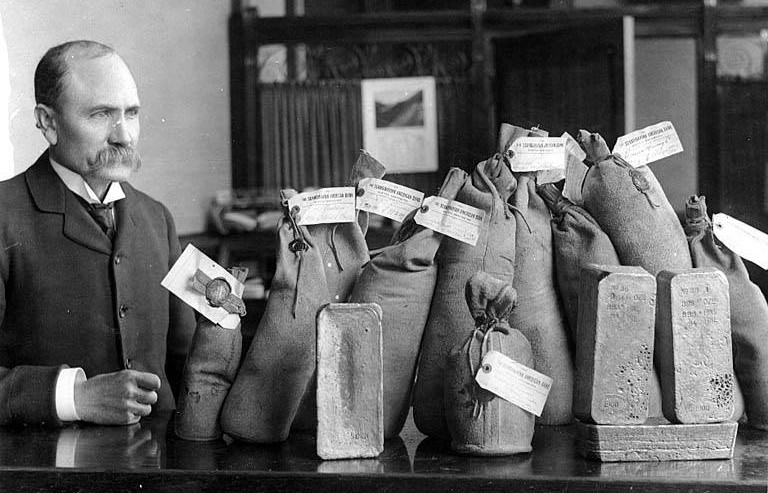Building a brand is essential to a retail business’ success. Once the product leaves your warehouse and reaches the customer, all connections between you and your buyer are effectively severed – unless you’ve built a brand.
A brand can be many things. It is a personality. It is a message. It is a story. Most importantly, it is a value proposition to your customer.
Like we’ve said before, building a brand can be tougher when you sell on a marketplace. This is because very few things are in your control. The entire personality of a marketplace is pre-determined without your company’s input; all you have control over is the product itself – that too, sometimes, can be out of your control.
To succeed in this environment when you sell sourced products (ones you don’t manufacture yourself), you need to build a brand around these limitations.
As Neil Waterhouse said in his interview with Andy Geldman, you need to build a generic brand.
A generic brand?
A generic brand is akin to being a Walmart or a Target. You aren’t particularly known for selling any one thing; instead, you sell a lot of different things. Effectively, you are a superstore – a mini Walmart and Target – from your garage!
One of the biggest factors that come into play in branding is the name of your business. If you call yourself “MobileCasesGalore” and are selling office supplies too, people will think twice before buying office supplies – though they may not mind buying mobile phone cases.
That’s why you can call yourself cheesy (but effective) names like “Deals4U”, “Amber Trading Co.”, and the like. Deals4U and Amber Trading Co. can sell whatever they like – their names and the images they portray lend well to diversity of selection.
The other disadvantage of selling just one thing or one type of thing is that Amazon might realize that something is selling well, and if they decide to source it themselves, I can guarantee that they will sell it cheaper than you – and if you don’t use FBA (fulfillment by Amazon), they can ship it for free (or in two days for Prime members).
When Amazon starts outselling you on your top selling product, what will that mean for your business?
Go to eBay and browse through some power sellers – most of them won’t be selling just one kind of item. A lot of them will sell a diverse collection of items arching out across many niches. These niches can be related – a guy selling memory might also sell video cards and monitors. It’s also possible to sell completely unrelated products, like hunting equipment and animal rights t-shirts!
If you want to be successful on a marketplace, you can’t get tied down by a very specific niche. In a post I wrote a few months ago, I described how to play the numbers game on Amazon and try to identify a successful series of products from a very large catalog.
This is tied to the same foundational principle!
When I started out on Amazon, I had a supplier called DBL Distributors. Once I got up and running, I had over 10,000 products for sale. My brand name was generic, which helped me maintain my image of diversity.
While DBL was an electronics distributor primarily, just “electronics” can no longer be considered a niche – electronics is more like an entire industry. A niche among electronics could be “Bluetooth headsets for the iPhone 5.” If I only sourced and sold Bluetooth headsets, I could do well in the short term, but I’d always be at risk.
Each product can be a brand
Each product you sell can be a “brand” on its own. This is especially true if you sell proprietary products. When no one else sells what you sell, you have an opportunity to create a strong brand within the constraints of marketplaces.
However in either case, the golden ticket is reviews.
Every review a customer leaves for your product adds to your brand. Remember, the brand will be associated with the product and not necessarily the seller, because face it, how many people search on marketplaces by a seller’s name? People search for products. And the stronger you can make your product’s image, the stronger your brand inherently becomes.
Effectively, each product can be a business by itself – in that interview, Neil Waterhouse discusses a rule he follows that if any particular product does not meet a set sales goal for the month, it is cancelled.
To turn drop-shipped products into their own brands is tough, since so many other people sell the product and you’re also working alongside the branding efforts of the manufacturer and other sellers. A sale you make might contribute a review, but the value of the review will be diminished.
There is one way out here – if you can find a small manufacturer whose products are not yet on marketplaces and convince them to drop-ship for you, you can pull it off. You have to try and fight for exclusivity though, as there will always be someone else who gets wind of what you are doing and wants to copy you!
Why it’s better for marketplace sellers
Aside from the product itself, there is no opportunity for you to create a brand persona before the actual sale on a major marketplace. On Amazon, it’s all about the buy box. When a customer sees your logo on Amazon, your rating, and your price, that’s all you have, and it’s a very quick first impression.
So if you focus on creating or sourcing the best damn product there can be, you will automatically have an advantage in getting good ratings and reviews. The more reviews you get, the more opportunity you have for sales, since Amazon’s algorithms will place you higher in their buy box.
This is why it can be better as a marketplace seller: your only real challenge is to source the best product. If you really kick ass at sourcing products, you will build a large review base and high ratings, and in turn, a valuable brand.
As a marketplace seller, your brand is your ratings and your ratings alone. This is especially true on eBay. On eBay, the same rules apply, except it’s no longer about the buy box. It’s about your pricing and your feedback.
There is more wiggle room to brand yourself on eBay because you can have your own branded templates for your listings and descriptions, but even if you have the most attractive listings in market, without good feedback they’re practically worthless.
I’ve been using eBay nearly since it was a dot com startup – and over the years, it seems buyers are less likely to give feedback nowadays than they were some years ago.
To get good feedback, you need to step up your game with excellent service and an excellent product.
Don’t forget the value of content
In an earlier set of posts on creating a brand as an eBay seller and as an Amazon seller, I mentioned that you can create content sites to supplement your products. You could use these sites to provide support after the sale, and even to drive traffic to marketplaces to make the sale.
Think about a content site you can build around a loose group of your products – what might tie those products together?
Some products might have enough potential to create entire sites around just one or two. A lot of amazing stores do this – just sell one single product. You can bet those site are loaded with great content that both drive in traffic and convert it to customers.
Many authors do this already with affiliate links to their books. In some instances though, the content on the site is so compelling and valuable that the author might be literally selling themselves short by ONLY linking to just the one book, when they could also be selling products relative to their topic. Here is one example:
The site offers a lot of great content about hiking Clingman’s Dome in the Great Smokey Mountains.
You may be wondering how you can create a site for so many different and diverse products. The answer is simple – don’t create just one site!
The beauty of the Internet is that you can create as many diverse and different websites as you like. Each website that you create – each content hub – when grown and nurtured will become an asset with its own intrinsic value, sometimes more than that of one of your products! In fact, that same author above also wrote a book about Harney Peak in The Black Hills of South Dakota, and launched a similar site. Totally different product, different content, but the same kind of engine that drives sales to her book.
Quick tip: use your product’s reviews and your own feedback as social proof and testimonials on your sites.
As your content sites grow and gain traffic, you can install an ecommerce plugin and start selling from them directly, bringing you commission-free sales from your own venue, and taking some sales from the marketplaces. You can celebrate the fact that you’re now pocketing the 10-15% that marketplaces usually charge.
Think about a content site you can build around a loose group of your products – what might tie those products together?
Some products might have enough potential to create entire sites around just one or two. A lot of amazing stores do this – just sell one single product. You can bet those site are loaded with great content that both drive in traffic and convert it to customers.
The beauty of reaching this stage with your business is that you are no longer just a reselling business dependent on the expensive traffic of others: you are a de-risked, multi-channel, content-producing, self-propelling retail machine — built on a simple generic brand with great products.





